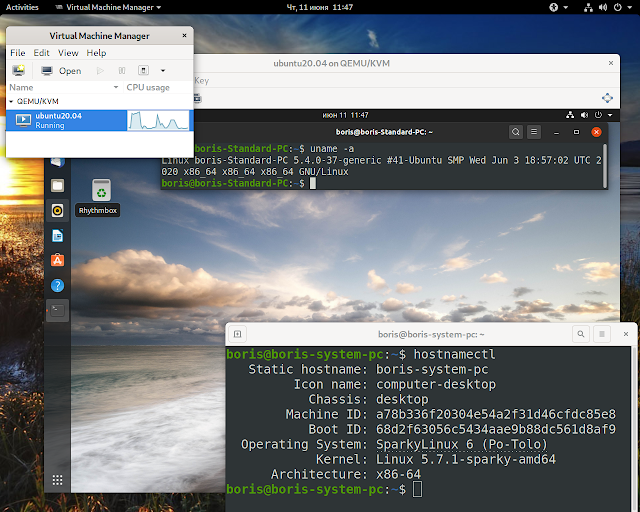*******************************************
UPDATE 06/25/2020
Hardware issue - I've reinstalled expensive cordless mouse and appear to be able manage VM's installation via Cockpit VNC Console.
**********************************************
The core target of deployment below is to create KVM guest on F32 Server Virthost attached to external office LAN rather then to default libvirt network. As bridge creating tool Web Cockpit Console was selected. Spice console is still utilized to manage guest forked via Web Console.
Original setup
$ sudo dnf groupinstall 'Virtualization'
Setup Web Cockpit Console of F32 Server
$ sudo dnf install cockpit cockpit-machines
Another option to manage deployment is to invoke virt-viewer ( click the button "Launch Remote Viewer" in Cockpit console area ) and open VNC session with guest in separate window
References
1. https://fedoramagazine.org/create-virtual-machines-with-cockpit-in-fedora/
UPDATE 06/25/2020
Hardware issue - I've reinstalled expensive cordless mouse and appear to be able manage VM's installation via Cockpit VNC Console.
**********************************************
The core target of deployment below is to create KVM guest on F32 Server Virthost attached to external office LAN rather then to default libvirt network. As bridge creating tool Web Cockpit Console was selected. Spice console is still utilized to manage guest forked via Web Console.
Original setup
$ sudo dnf groupinstall 'Virtualization'
Setup Web Cockpit Console of F32 Server
$ sudo dnf install cockpit cockpit-machines
Service start up
$ sudo systemctl start cockpit.socket
$ sudo systemctl status cockpit.socket
$ sudo systemctl enable cockpit.socket
Firewall tuning
$ sudo firewall-cmd --add-service=cockpit --permanent
$ sudo firewall-cmd --reload
$ sudo reboot
Attach bridge0 to network interface enp2s0
Fork and deploy KVM guest attached to office LAN
Deploying managed by Spice Console via network installation minimal DVD - debian-10.4.0-amd64-netinst.iso .
Debian 10.4 KVM guest deployed to office LAN
Ubuntu 20.04 KVM guest with IP obtained via outgoing office router ( another test )
Another option to manage deployment is to invoke virt-viewer ( click the button "Launch Remote Viewer" in Cockpit console area ) and open VNC session with guest in separate window
References
1. https://fedoramagazine.org/create-virtual-machines-with-cockpit-in-fedora/


























